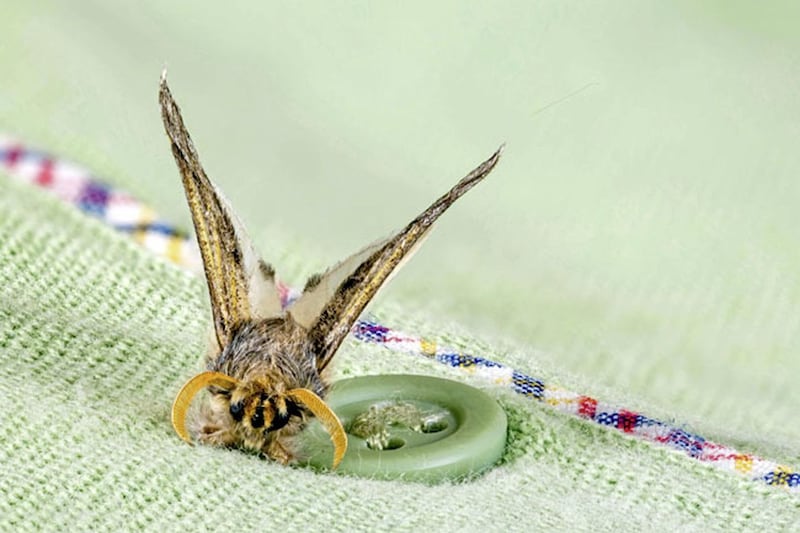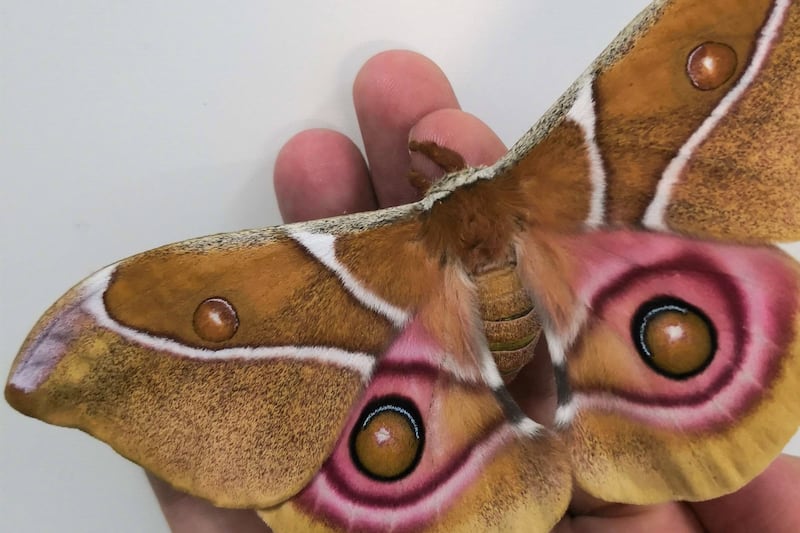The butterfly's less fashionable cousin needs help from gardeners...
WHEN pollinators are mentioned, we tend to think of bees but many species, including birds, butterflies and beetles help plants reproduce by transferring pollen grains from the male anther of a flower to the female stigma.
And let's not forget moths, who have tended to get a bad press over the years, regarded by the uninitiated as the butterfly's beige coloured, unglamorous cousin, an insect that works itself into self-destructive, dizzying frenzy around any light source. Nor is the moth's reputation helped by the damage their larvae can do to clothes made from animal fibres, such as wool, silk and leather, all of which contain the fibrous protein keratin, an ideal food source for the maggot-like moths in the making.
At a friend's house last weekend, our host complained, with an accompanying shudder, about a moth in the dining area. My immediate assumption was that it was a sizeable, noisy creature trapped in a lampshade and that it would likely flutter frantically until exhausted – if not released by a sympathetic human. Arriving to the rescue, I was somewhat surprised to learn that it was barely visible, never mind audible; a fragile looking insect – a micro moth I believe – that looked like it would be lucky to have lived for another hour. It was handled gently and released silently into the night, its delicate wings belying an ability to cover dozens of miles in a matter of hours.
You see, we need to love moths and appreciate their role in indicating biodiversity, as well as sustaining it.
There are around 1,500 species of moth in Ireland, with habitats as varied as bogs, beaches, mountains and marshland. And contrary to the drab image, their markings can be quite eye-catching, as the tiger moth, six-spot burnet moth and the elephant hawk-moth are testament. Indeed, not all moths are nocturnal either, with many opting to fly during daylight hours, while some hardier species are even active over the winter months.
Moths are important pollinators. They complement the work of other insects and help ensure greater plant diversity. Research has shown that their pollen transport networks are bigger and more complex than other's, while those furry bodies – arguably the source of so many cases of lepidopterophobia – are a great asset when it comes to spreading pollen from flower to flower.
The brief for helping moths in the garden is ostensibly the same as it is for all pollinators, namely grow plants with flowers that will attract them. The key difference for moths is that the emphasis with the flowers is on scent rather than a visual stimulus, and as well as catering for the adults, it's important to provide plants for the caterpillars too.
Nectar-rich plants for night-flying moths include Nicotiana alata, the tobacco plant, which has big trumpet-shaped flowers. Two great climbers whose sweet smelling flowers will provide an irresistible supper for moths are jasmine and honeysuckle, both of which boost their scent output as the sun drops.
A non-native much loved by the Irish moth population is evening primrose, a prolific self-seeding biennial and summer-long star of the cottage garden. Growing more than a metre in a rather unregimented fashion, its habit could irk those who prefer more order. Also check-out sweet rocket, Michaelmas daisy and Sedum spectabile.








